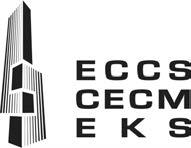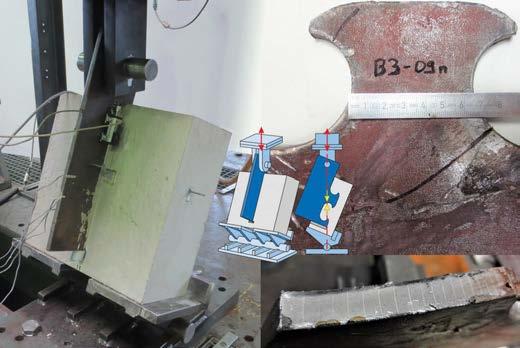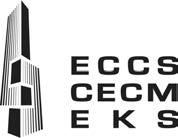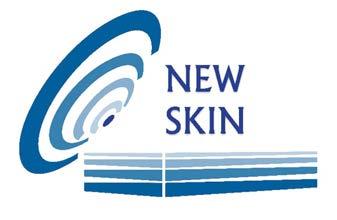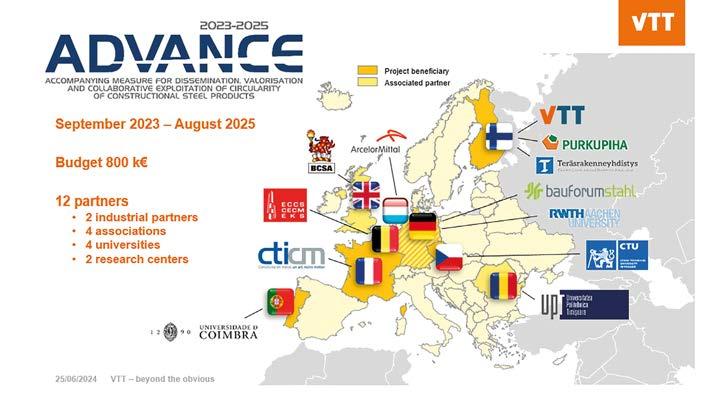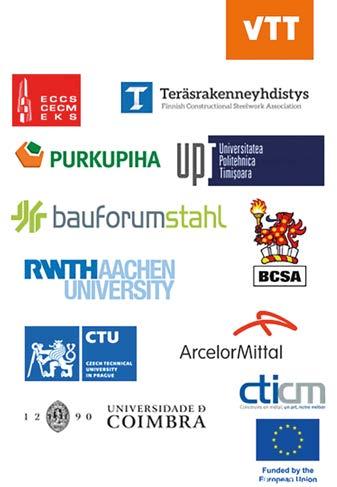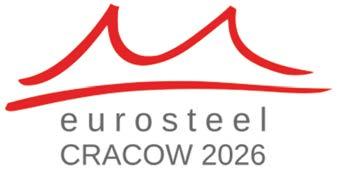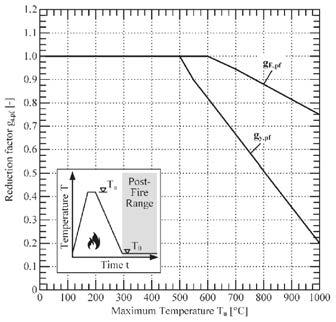ADVANCE
The project’s ambition is to contribute to greenhouse gas reduction and circular economy goals by addressing these challenges in both deconstruction and reuse of existing steel buildings, and in the design of new buildings, their construction and documentation to facilitate future reuse. Its scope includes reuse of constituent products, fabricated components, and reuse of component assemblies. The reused material may originate from primary structures, secondary structures and envelopes.
The primary objective is to increase the recovery and reuse of constructional steelwork by providing engineers, investors, contractors and other decision makers with reliable performance data and guidance. This will be achieved by disseminating the information about the products, systems, methods and protocols that facilitate reuse of various components of constructional steelwork using the tools and methodologies developed within activities of the consortium partners.
The outcomes of the project will include recommendations to enable reuse of building components in-situ or in different location(s), and in the original layout or in a different design with the necessary modifications/adaptations to resist the new external loads (due to the relocation) or internal loads (due to the modification of the structural layout). Our goal is to address the wider scientific, business and engineering
Contacts
Newskin aisbl
Avenue des Ombrages 32/20
B – 1200 Brussels
Email: carlos.delcastillo@newskin-oitb.eu
Website: https://www.newskin-oitb.eu/
Statutes and membership application form can be requested to: carlos.delcastillo@newskin-oitb.eu
community in the Member States with the localized Recommendations for Reuse, information brochure, mobile app and presentation materials.
In particular, the objectives are to:
1. Provide guidance for reuse of existing components or structures and design of new ones, introduce recommendations for product/waste status and material testing protocol for recertification of steel products in the updated Recommendations for Reuse
2. Support declaration of the environmental benefits of steel reuse implemented in the mobile LCA app and web tool
3. Increase awareness about the alternative end-of-life options for constructional steel and steel-based products
4. Identify the possibilities and roadmaps for scaling up the outcomes of the background projects beyond their original focus area
12 organisations will be participating in the project implementation (2 research institutes, 5 industrial associations, demolition contractor and 4 universities).
17th June 2025
House of Belgian Builders
THE HUBB Avenue des Arts 20 1000 Brussels
Webinar: Galvanized steel short and medium span bridges
Save the date for the next webinar organized by ECCS with the support of the European General Galvanizers Association (EGGA).
Galvanized steel short and medium span bridges: Achieving optimal service life
Webinar, 03 March 2025
14:00–16:30
Peters, Tom F.: Industrializing Iron Construction at the École Centrale Paris 1829–65. Madrid: Instituto Juan de Herrera. Escuela Técnica Superior de Arquitectura, Universidad Politécnica de Madrid 2024. vii–xiv, 520 pp., many illustrations, 16.7 x 23.5 cm, softcover.
ISBN 978-84-9728-615-2, CHF 58,Order by email from the author: tomfpeters@gmail.com
When people talk about French engineering schools, the name of an institution created in 1794 during the French Revolution is likely to come up: it is the École Polytechnique (EP), the model of higher technical education par excellence. Civil engineers with an interest in history may still be able to name the École des Ponts et Chaus-
sées (EPC), founded in 1747 by Daniel Charles Trudaine (1703–1769), King Louis XV’s Minister of Finance, the first engineering school of modern civil engineering.
But who is familiar with the École Centrale des Arts et Manufactures Paris (ECP), founded in 1829 on the private initiative of businessman Alphonse Lavallée (1791–1873) and the scientists Théodore Olivier (1793–1853), Eugène Péclet (1793–1857) and Jean-Baptiste Dumas (1800–1884)? You may be familiar with the following names: Camille Polonceau (1813–1859), William Le Baron Jenney (1832–1907), Gustave Eiffel (1832–1923), Edmond Coignet (1856–1915) and Francis Bouygues (1922–1993) – all graduates of the ECP.
In 1840, Polonceau designed the Polonceau truss named after him (Fig.), a roof truss that later spanned countless spaces (made entirely of iron) and was sometimes called the French truss. Jenny, the „father of skyscrapers“, designed the 10-storey, 42 m high Home Insurance Building in Chicago, completed in 1885, which is considered the world’s first high-rise building and has a steel skeleton as its load-bearing system. Eiffel is synonymous with classic iron construction in the second half of the 19th century. Edmond Coignet is regarded as a pioneer of reinforced concrete in France and spread this type of construction as an entrepreneur through innovative buildings. Finally, in 1952, Francis Bouygues founded the construction company named after him,
The event is free of charge. Information regarding registration and program details will be available soon.
Moderator: Prof. Pavel Ryjacˇek, CTU in Prague Chair – ECCS Bridge Committee
The Webinar is free of charge.
Detailed programme and registration will be available soon in the ECCS website: www.steelconstruct.com
which is now one of the world’s leading construction groups.
With the ECP, on the eve of the July Revolution of 1830, which finally ended the restorative Bourbon rule, the liberal French bourgeoisie created a training centre for engineers tailored to its needs, which was to advance the process of industrialization in general and iron construction in particular. This book provides an impressive account of industrializing iron construction at the ECP.
Tom F. Peters, who worked for many years as a professor at Lehigh University in Bethlehem/USA, became internationally known through his monographs „Transitions in Engineering. Guillaume Henri Dufour and the Early 19th Century Cable Suspension Bridges“ (1987) and „Building the Nineteenth Century“ (1996).
In the first part of his book (pp. 25–307), Peters deals with the pedagogy of the ECP and also takes into account its social roots, mentioning Jean-Rodolphe Perronet
(Source: drawing by K.-E. Kurrer)
(1708–1794), the first director of the EPC, and Gaspard Monge (1746–1818), the protagonist of the EP. Basic elements of the pedagogical concept of „Vulgarisation“ of scientific knowledge (p. 91), which played a key role for the ECP, can be traced back to Monge. In the context of engineering education, the French word „Vulgarisation“ corresponds to natural science-based engineering and engineering-based natural science, which in the German-speaking world was sometimes simplistically referred to as „scientific technology“ (= „wissenschaftliche Technik“) in the past. It is therefore not only a question of the knowledge of the causal relationship realized in the technical model, but also of the constructive or technological modelling of causal relationships in technical structures and processes. Peters demonstrates this convincingly us-
REVIEWERS
List of reviewers who have completed at least one review for Steel Construction in 2024. The editors would like to thank all reviewers, also on behalf of the authors.
Steffen Anders
Max Gündel
Isidora Jakovljević
Michal Jandera
Markus Kettler
ing the example of ECP, a hot spot of innovation in iron construction.
The second part of this book (pp. 309–463) is dedicated to the practical implementation of the pedagogical concept at the ECP. The author devotes considerable space to the contribution of Louis-Charles Mary (1791–1870) and analyses the consequences of this concept in the section „The result in iron: a brief characterization of six careers“ (pp. 409–463): Polonceau, Joseph-Louis Henri de Dion (1828–1878), Eiffel, Jenney, Onésime Armand Moisant (1838–1906) and Victor Contamin (1840–1893). Contamin was to be the engineer responsible for the 113.5 m wide Galerie des Machines for the 1889 World Exhibition in Paris, where the Eiffel Tower also astonished the world: two leading structures of
classical iron construction designed by graduates of the ECP.
In his concluding thoughts (pp. 465–472), Peters provides a concise summary of industrializing iron construction at the ECP. A thorough bibliography rounds off the book, which is well done in terms of content and form.
All those who would like to find out more about the development of classical iron construction and the contribution of the ECP to this should pick up this book. It is an extraordinarily stimulating read – a firework of historical knowledge that is still able to unfold its productive power today.
Nima Khodadadi
Michael Kraus
Wojciech Lorenc
Daniel Lozano
Roberto Nascimbene
Satheeskumar Navaratnam
Federico Nuñez
Christoph Odenbreit
Daniel Pak
Kris Roy
Hamid Sadegh-Azar
Aldina Santiago
Ana Francisca Santos
Simon Schaffrath
Davor Skejic
Natalie Stranghöner
Nima Tajik
Andreas Taras
Cem Topkaya
Paulo Vila Real
František Wald
Rainer Wirtz
EVENTS
Eurosteel 2026 in Cracow, Poland
The 11th European Scientific Conference on Steel and Composite Structures Eurosteel 2026 will take place 16–18 September 2026 in Cracow, Poland. Two technical universities will organize the Eurosteel conference, the Cracow University of Technology (Politechnika Krakowska, PK) and the Rzeszów University of Technology (Politechnika Rzeszowska, PRz), with European Convention for Constructional Steelwork (ECCS) as a partner.
All scientists, designers, producers and students interested in the design of new and upkeep of existing structures made of structural steel and composite structures are invited to participate in the 11th European Scientific Conference Eurosteel 2026. During the conference special attention will be paid to modern, innovative, environmentally friendly construction solutions and the issue of reusing steel structural elements.
The conference will be the 11th in this series. Previous conferences of this series took place in Athens (1995), Prague (1999), Coimbra (2002), Maastricht (2005), Graz (2008), Budapest (2011), Naples (2014), Copenhagen (2017), Sheffield (2021) and Amsterdam (2023).
Cracow is very well connected to the rest of Europe and the rest of the world. The In-
ternational Airport in Cracow-Balice is connected to many international destinations by reputable air carriers. Cracow is also a hub of convergence for both rail and car transport. It has a vibrant hotel network offering facilities of various standards suitable for all budgets.
Prof. Aleksander Kozłowski (Rzeszów University of Technology) heads the Conference’s Scientific Committee. Prof. Mariusz Maślak (Cracow University of Technology) heads the Organizing Committee.
EUROSTEEL 2026
16–18 September 2026 Cracow, Poland
https://eurosteel2026.prz.edu.pl eurosteel2026@prz.edu.pl
Karl-Eugen Kurrer, Berlin
Place and
Online
3 March 2025
Antwerp, Belgium
8 to 11 July 2025
Barcelona, Spain
8 to 10 September 2025
Essen, Germany
15 to 19 September 2025
Chur, Switzerland
3 to 5 September 2025
Stuttgart, Germany
7 to 9 September 2025
Rostock, Germany
10 to 12 September 2025
Copenhagen, Denmark
21 to 24 April 2026
Cracow, Poland
16 to 18 September 2026
Webinar – Galvanized steel short and medium span bridges: Achieving optimal service life
6th International Conference on Structures and Architecture
The International Colloquium on Stability and Ductility of Steel Structures
Schweissen & Schneiden
Joining – Cutting – Surfacing
steelconstruct.com
icsa2025.com
sdss2025.upc.edu
schweissen-schneiden.com/joiningcutting-surfacing
Footbridge footbridge2025.com
parts2clean
21st International Probabilistic Workshop (IPW 2025)
IABSE Symposium Copenhagen 2026
Bridging Advanced Technologies – Structural Innovation
Eurosteel 2026
parts2clean.de
ipw2025.uni-rostock.de/en
iabse.org/copenhagen2026
eurosteel2026.prz.edu.pl
Steel Construction – Design and Research
The articles published in the journal are protected by copyright. All rights are reserved, particularly those of translation into foreign languages. No part of this journal may be reproduced in any form whatsoever without the written consent of the publisher. Brand-names or trademarks published in the journal are to be considered as protected under the terms of trademark protection legislation, even if they are not individually identified as such.
Manuscripts can be submitted through: http://mc.manuscriptcentral.com/stco
If required, offprints or run-ons can be made of single articles. Requests should be sent to the publisher.
Current prices
The journal “Steel Construction – Design and Research” comprises four issues per year. In addition to “Steel Construction – Design and Research print”, the PDF version “Steel Construction – Design and Research online” is available on subscription through the “Wiley Online Library” online service.
Please note: starting with Vol. 18 (2025), No 1, the journal will be published online only.
Members of the ECCS – European Convention for Constructional Steelwork receive the journal Steel Construction as part of their membership.
Prices exclusive VAT and inclusive postage. Errors and omissions excepted. Subject to change without notice. Student prices, bulk prices and prices in other currencies on request.
Prices are valid from 1st September 2024 until 31st August 2025.
Personal subscriptions may not be sold to libraries nor used as library copies.
A subscription lasts for one year. It can be terminated in writing at any time with a period of notice of three months to the end of the subscription year. Otherwise, the subscription extends for a further year without written notification.
“Steel Construction – Design and Research”, ISSN 1867-0520, is published quarterly. US mailing agent: SPP, PO Box 437, Emigsville, PA 17318. Periodicals postage paid at Emigsville PA.
Postmaster: Send all address changes to “Steel Construction – Design and Research”, John Wiley & Sons Inc., C/O The Sheridan Press, PO Box 465, Hanover, PA 17331.
Publisher
Ernst & Sohn GmbH
Rotherstraße 21, 10245 Berlin, Germany
Phone +49 (0)30 47031-200, Fax +49 (0)30 47031-270 info@ernst-und-sohn.de www.ernst-und-sohn.de
Domicile of the corporation: Berlin
Amtsgericht Charlottenburg, HRB 237294 B
Managing directors: Dr. Guido F. Herrmann, Franka Stürmer
VAT-Id.No.: DE 813496225
Tax No.: 47020/34142
Journal for ECCS members
The ECCS – European Convention for Constructional Steelwork and Ernst & Sohn have agreed that from 2010 onwards Steel Construction is the official journal for ECCS members. www.steelconstruct.com
Editor-in-chief
Bernhard Hauke, Ernst & Sohn, ECCS
Phone +49 (0)160 97858589 bernhard.hauke@wiley.com
Project Manager
Giulia Fumagalli
Phone +49 (0)30 47031-269 giulia.fumagalli@wiley.com
Editorial Board
Véronique Dehan, European Convention Constructional Steelworks
Markus Feldmann, ECCS, RWTH Aachen University
Olivier Vassart, ArcelorMittal
Scientific Board
Frans Bijlaard, Technical University Delft
Dinar Camotim, Instituto Superior Técnico Lisbon
S. L. Chan, The Hong Kong Polytechnic University
Paulo Cruz, University of Minho
Jean François Demonceau, ECCS, University of Liege
Dan Dubina, Polytechnic University Timisoara
László Dunai, Budapest University
Morgan Dundu, University of Johannesburg
Markus Feldmann, ECCS, RWTH Aachen University
Dan Frangopol, Lehigh University
Leroy Gardner, Imperial College
Jerome Hajjar, North Eastern University
Jean-Pierre Jaspart, University of Liege
Ulrike Kuhlmann, University of Stuttgart
Jörg Lange, ECCS, Technical University Darmstadt
Raffaele Landolfo, ECCS, University of Naples
Guo-Qiang Li, Tongji University
Richard Liew, National University of Singapore
Enrique Mirambell, Polytechnic University of Catalunya
Kim Rassmunsen, University of Sydney
John Michael Rotter, The University of Edinburgh
Peter Schaumann, ECCS, Leibniz University Hannover
Bert Snijder, ECCS, Technical University Eindhoven
Kunitomo Sugiura, Kyoto University
Andreas Taras, ETH Zürich
Thomas Ummenhofer, ECCS, Karlsruhe Institute of Technology
Viorel Ungureanu, ECCS, Polytechnic University of Timisoara
Ioannis Vayas, National Technical University Athens
Milan Veljkovic, Technical University Delft
Pedro Vellasco, Rio de Janeiro State University
Paulo Vila Real, ECCS, University de Aveiro
František Wald, Czech Technical University Prague
Riccardo Zandonini, University of Trento
Industrial Board
Alexander Britner, ECCS, KIT Center Steel Timber Masonry
Véronique Dehan, European Convention Constructional Steelworks
Mladen Lukic, ECCS, CTICM
Koen Michielsen, Infosteel Belgium/Luxembourg
Kjetil Myhre, ECCS, Norwegian Steel Association
Till Vallée, Fraunhofer IFAM
Olivier Vassart, ArcelorMittal
Ad Sales Manager
Sylvie Krüger
Phone +49 (0)30 47031-260 sylvie.krueger@wiley.com
Services for customers and readers
Wiley-VCH Customer Service for Ernst & Sohn
Boschstrasse 12, D-69469 Weinheim
Tel.: +49 (0)800 1800 536 (Germany)
Tel.: +44 (0)1865476721 (outside Germany) cs-germany@wiley.com
Quicklink: www.wileycustomerhelp.com
Layout and typesetting
3w+p GmbH Typesetting Automation Experts, Rimpar
© 2025 Ernst & Sohn GmbH
High-strength steels can contribute to more sustainable and resource-efficient constructions. However, for a reliable assessment of the residual load-bearing capacity of high-strength steel components after a fire, there is still a lack of sound models on the postfire material behaviour of high-strength steels, so high-strength steel components are usually replaced after a fire. This paper presents the development of an application-oriented material model for the determination of relevant mechanical material properties of high- and ultra-high-strength steels in the post-fire range (Uszball, S.; Knobloch, M.).


